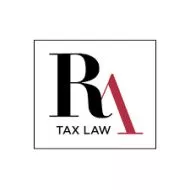In the intricate world of tax law, staying compliant with the ever-evolving regulations and legislation is crucial for businesses and individuals alike. Among the various tax provisions, the General Anti Avoidance Rule (GAAR) stands out as a significant element of Canada's tax landscape. Understanding GAAR is paramount for taxpayers across Canada, as it plays a vital role in preserving the integrity of the tax system. This comprehensive guide, delves into the depths of GAAR, its implications, and strategies for navigating this complex terrain.
What is the General Anti Avoidance Rule (GAAR)?
GAAR is a provision in the Canadian Income Tax Act that aims to prevent taxpayers from engaging in tax avoidance transactions that are contrary to the object, spirit, or purpose of Act. In essence, it is a safeguard against aggressive tax planning strategies that circumvent the intention of tax legislation. GAAR is invoked by the Canada Revenue Agency (CRA) to challenge transactions that are primarily undertaken for the purpose of tax avoidance, even if at the time they took place, they were in “compliance” with the law.
Purpose of GAAR
The primary objective of GAAR is to maintain the integrity of the tax system. It does this by discouraging artificial and abusive tax avoidance schemes that exploit technicalities within the tax code. GAAR encourages taxpayers to engage in legitimate economic activities and ensures that taxes are assessed fairly.
Key Principles of GAAR
GAAR consists of several key principles:
- Tax benefit: The GAAR provision is triggered when a taxpayer obtains a tax benefit through an avoidance transaction.
- Avoidance transaction: This refers to a transaction or a series of transactions that result in a tax benefit and is undertaken primarily for that purpose.
- Abusive: The avoidance transaction is considered abusive if it defeats the object, spirit, or purpose of the Income Tax Act.
GAAR Analysis
When determining whether GAAR applies to a particular transaction, the following steps are considered:
- Establish the facts: First, the CRA reviews the facts and circumstances surrounding the transaction to identify the tax benefit and its primary purpose.
- Determine abusive nature: The CRA assesses whether the transaction is abusive and defeats the object, spirit, or purpose of the tax legislation.
- Evaluate the commercial purpose: A transaction may not be deemed abusive if it has a valid commercial purpose beyond tax avoidance, even if tax avoidance was an ancillary feature.
- Review for reasonable tax planning: Transactions that involve reasonable tax planning are not typically caught under GAAR.
GAAR's Scope and Limitations
GAAR has both a broad scope and certain limitations:
- Scope: GAAR can apply to a wide range of transactions, including those involving reorganizations, estate planning, and investments.
- Limitations: GAAR does not apply to transactions carried out with a primary purpose other than tax avoidance. Additionally, some specific tax provisions are exempt from GAAR.
Challenges and Controversies
GAAR remains a controversial and evolving area of tax law. Challenges often arise due to the subjective nature of the “abusive” assessment. This has led to numerous court cases, resulting in varying interpretations of GAAR.
Penalties and Consequences
If the CRA successfully invokes GAAR, the consequences can be severe, including the disallowance of the tax benefit, penalties, and potential criminal charges. Therefore, it is essential for taxpayers to engage in responsible tax planning and seek professional guidance when navigating complex tax matters.
Strategies for Navigating GAAR
Navigating GAAR requires careful consideration and meticulous planning. Some strategies to stay within the boundaries of GAAR include:
- Engaging in legitimate economic activities with valid commercial purposes.
- Seeking professional tax advice to ensure compliance with tax regulations.
- Being transparent and accurate in tax reporting.
- Keeping abreast of changes in tax legislation and regulations.
Conclusion
Canada's General Anti Avoidance Rule (GAAR) is a crucial aspect of the country's tax system. Understanding GAAR is vital for taxpayers in Toronto and across Canada, as it has a substantial impact on tax planning and compliance. By adhering to the principles of GAAR, staying informed about its scope and limitations, and seeking professional tax advice, taxpayers can navigate this complex landscape with confidence and avoid the potential consequences of non-compliance. Our tax law firm in Toronto is dedicated to providing expert guidance in managing GAAR-related issues and ensuring that your tax planning remains legitimate and compliant with Canadian tax laws.
The content of this article is intended to provide a general guide to the subject matter. Specialist advice should be sought about your specific circumstances.


